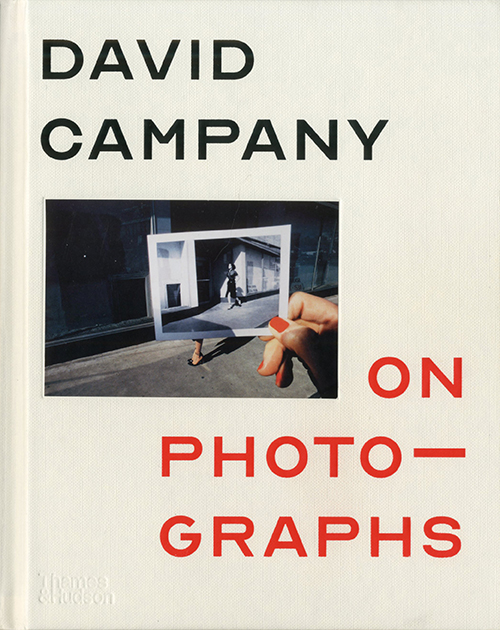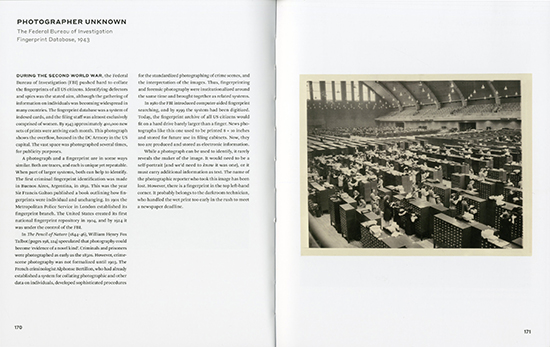| SIMON DENISON IMAGE & TEXT |
| PREVIOUS | NEXT |
ON PHOTOGRAPHS David Campany Thames & Hudson, 2020 ISBN 978-0-500-54506-5 Hb
Looking back over the past century and more of critical theory about photography, it seems that fashionable ideas have tended to amble along a particular path for a few decades before we notice a decisive change of direction. A corner seems to be turned. In reality, evolution is no doubt constant but more or less imperceptible; and it takes a book of unusual authority and clarity to reveal that the intellectual landscape is no longer what it was. David Campany’s On Photographs looks to me to be just such a scene-changing book. In form and style, it closely resembles John Szarkowski’s classic, Looking at Photographs, published in 1973. Like that book, it contains short meditations on a set of photographs (120 in this case), printed one to a page with text opposite, sketching what each picture might suggest about photography as a whole. Despite their lightness of touch, the various entries amount altogether to a multi-faceted theory of photography as photography, what it is, how it can be understood, how it can affect us, and why it fascinates. For many of his admirers, Szarkowski has never been surpassed for the clarity and elegance of his writing on photography. Nonetheless, he was vilified in the 1980s by some of the pioneers of the cultural approach – notably Abigail Solomon-Godeau – as a modernist dinosaur whose attempts to define photography’s essential characteristics, and his support of the idea of the photographic artist/auteur, were seen as so much conservative hocus-pocus, serving the interests not of cultural understanding but of connoisseurship and the art market. One of the chief delights of this new book is that, in many of his entries, Campany matches Szarkowski for fluency and grace; but equally striking is the fact that many of Szarkowski’s interests, and those of other modernist and earlier thinkers about photography, have made a return, recuperated but reimagined for the 21st century. The lessons of the cultural years have been absorbed and are calmly present, but they are no longer privileged. They are no longer enough. There is much more to say. Thus, several photographs here are used to illuminate key cultural and poststructuralist themes, including authorship, representation, implicit ideology, and the fluidity and proliferation of meanings in different contexts. Yet there are also reflections on such ‘essential’ characteristics of photography as the natural circularity of a lens-made image, photographic surface, colour, the relationship between photography and time, photography’s status as trace, and much else. Campany writes with assurance of the affective value of form, and of the continuing potency of historic photography and the photographic tradition. In discussing Cartier-Bresson, he writes of photography’s gentle, affirmative pleasures. Even the idea of genius makes a return here, in an unashamed celebration, in writing of Friedlander, of the ability of the ‘virtuoso photographer’ to transform the mundane ‘into another realm’. In Atget’s work, we are assured that photographs can be enigmatic evocations of ‘the mystery and poetry of the everyday’. Much of this would have been regarded as hopelessly soft and mystifying to some of the stern writers of recent years but I, for one, am delighted to see it back in the fold of legitimate photographic discourse. Campany displays a talent not only for the resonant individual phrase, but also for highly imaginative analogy. In reflecting on a 1955 Ken Russell photograph of a fourteen-year-old Teddy Girl, the ambiguities of both photography and teenagerhood are brilliantly cast in terms of one another: ‘In many ways adolescence is a perfect subject for photography,’ he writes. ‘It mirrors so many of the tensions within the medium: the awkward fit between appearance and deeper meaning; the limbo between past and future; the anxiety of being misread; the withdrawn silence and the wish to communicate; and the feeling that a moment could die right there, or last an eternity’. I offer one example from several. Some of the images discussed are iconic, but most are much less well known (at least to me), and numerous fascinating curiosities are included. A moving 1912 photograph of Franz Reichelt, mid-air in a practice jump to test a home-made parachute, is used to illustrate the power of the news media to influence the events it reports: Reichelt later died, watched by a pack of press photographers, in a foolhardy jump from the Eiffel Tower. In writing of the photograph’s capacity to serve as an index of everything but its own authorship, Campany finds a remarkable exception: a 1943 print of the FBI’s fingerprint database, which contains the darkroom printer’s fingerprint in its top left corner. The book is full of such treasures. |
 |
|---|---|
 |
|